Es ist schon wieder soweit : Treffen ab 19.00 Uhr
Wie immer Getränke sind vorhanden , Grillgut bitte selber mitbringen.
MFG DM4SH


Okt. 31
Es ist schon wieder soweit : Treffen ab 19.00 Uhr
Wie immer Getränke sind vorhanden , Grillgut bitte selber mitbringen.
MFG DM4SH

Okt. 02
Man kommt an FT8 ja irgendwie nicht vorbei. Neben den Standard-Diplomen wie DXCC, WAS oder VUCC (für VHF/UHF) gibt es noch den FT8-DigiModeClub. Mitgliedschaft ist kostenlos.
Es gibt dort ein Tool, in das man seine ADIFs laden kann. Dieses spuckt einem dann aus, welche Diplome man bereits erarbeitet hat, bzw. was wo/wie noch fehlt. Die (zumeist kostenlose) Beantragung kann auch darüber abgewickelt werden.
Viel Spass beim FT8en: https://ft8dmc.eu/
Sep. 30
Rückblick: Treffen 07.10.2023
Ich glaube behaupten zu dürfen: Es hat allen gefallen, es ist niemand verhungert oder verdurstet, alle haben sich gut unterhalten und es sind wieder neue Kontakte geknüpft worden.
73 de DM4SH (Sv
Sep. 04
Hallo an alle Funker ,
wollte nur mal kurzen Bericht erstatten, wie das Treffen am Samstag so verlaufen ist.
Erstmal ein großes Dankeschön an meine Frau und Meine Schwiegermutter die Döppekuchen für alle Mann gemacht hatte.
Hier ein paar kleine Impressionen vom Treffen:




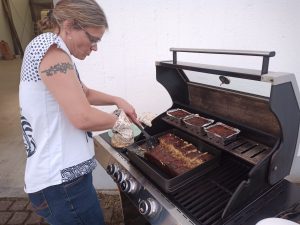

Hat echt wieder Spass gemacht. Bis auf ein baldiges Wiedersehen, de DM4SH Sven
Aug. 28
Liebe Funkfreunde,
hier ein kleines Tutorial wie man auf seinem Rechner / Laptop mehrere Rufzeichen (z.B. Ausbildungsrufzeichen) anlegen kann.
Schritt 1:
Man geht in die eigene Ordnerstruktur, dort wo ihr bei euch WSJTX installiert habt. Bei mir ist es: C:\WSJT\wsjtx\bin
Wie auf dem unten gezeigten Pfad im Screenshot geht ihr mit der rechten Maustaste auf das im Bild vorher markierte „wsjtx“ Symbol und klickt „Verknüpfung erstellen“.
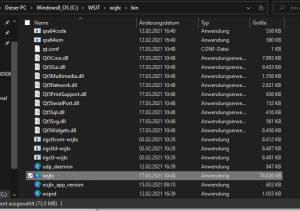
Schritt 2:
Nach dem ihr die Verknüpfung erstellt habt, ändert ihr den Namen auf das neue Rufzeichen, im unten gezeigten Beispiel „wsjtx – DL3O“.
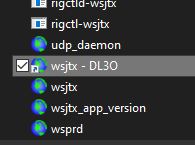
Schritt 3:
Auf die neu angelegte Verknüpfung inklusive der Namens/Rufzeichenänderung klickt ihr nun mit der rechten Maustaste auf das Symbol und dann „Eigenschaften“.
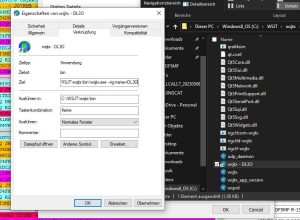
Schritt 4:
Ihr wechselt nun auf den Reiter „Verknüpfung“ und schreibt folgenden Script in „Ziel“ ein:
…\bin\wsjtx.exe –rig-name=DL3O
Wichtig: Zwischen „.exe“ und „–rig….“ ist ein LEERZEICHEN! Bei euch tragt ihr dann anstatt DL3O euer entsprechendes Rufzeichen ein.
Schritt 5:
Neue Verknüpfung noch auf den Desktop oder in euren gewünschten Ordner ablegen und das Programm wie gewohnt starten.
Schritt 6:
Jetzt müsst ihr euren Transceiver, COM Port etc. alles neu in WSJTX eingeben. Ich habe mir vorher Screenshots gemacht, damit ich alle Einstellungen gleich habe. Im Anschluss habt ihr dann ein komplett „jungfräuliches“ WSJTX.
Ich hoffe, dass ich euch ein wenig Unterstützen konnte oder werde, sofern ihr es mal in der Zukunft benötigt.
vy73 Marian „DF5MF“
Aug. 22
Nein! Packet-Radio ist nicht tot.
Für alle, die zuhause Probleme mit dem Aufhängen von Kurzwellenantennen haben. Es gibt eine Welt jenseits von Kurzwelle, und damit meine ich nicht Ortsrelais oder DMR-„Internetfunk“. Nein Satelliten!
Seit 2022 ist Oscar 117 (IO-117) im Orbit und dreht im sog. „Medium Earth Orbit“ (MEO) seine Runden. Was bedeutet MEO?
Nun bei LEO (Low Earth Orbit) bleibt einem zwischen AOS („Acquisition of Signal“) und LOS („Loss of Signal“)etwa 15Minuten Zeit ein QSO zu fahren. Genannt sei hier bspw. der Klassiker Oscar-50 (SO-50), der sich schon mit einem Equipment von unter 100 Euro bespielen lässt. Vgl. hierzu meinen Beitrag bei den „draussenfunkern„.
MEO ist eine ganz andere Klasse von SAT. Der steht schon mal – je nach Durchgang – etwas über eine Stunde am Himmel. Da kann man sich richtig schön austoben und relativ stressfrei experimentieren.
Was also macht IO-117 so besonders? Zum einen der Orbit mit seinen 1,5h Maximalüberflugzeit und zum anderen der eingebaute digipeater der mit 1,2k-Baud brav das digipeated, was hochgeschickt wurde. Durch den immensen Footprint lässt sich über IO-117 weit mehr arbeiten als bspw. über den GEOStationären QO100. Je nach Überflug geht da bspw. schon mal die Westküste der USA oder auch Alaska.
Was brauche ich um dort QRV zu werden? Ok, das geht leider nicht ganz so günstig wie bei einem FM-LEO-SAT, aber es geht. Schauen wir uns zunächst die Parameter an, die für ein erfolgreiches Packet-QSO notwendig sind:
Im Gegensatz zu „normalem“ terristischen Packetradio möchte der SAT per Seitenband bespielt werden. Damit fallen (alle mir bekannten) Handfunkgeräte schon mal aus. Benötigt wird also ein Transceiver der 70cm SSB beherrscht. Eine kleine Auswahl? Klar:
Ferner wird eine YAGI oder eine Logperiodic mit ordentlich Gewinn benötigt. Sendemässig reichen 5-10W locker aus. Konnt ich selber nicht glauben, ist aber tatsächlich so. Beide Antennen, die ich hier verlinkt habe, beherrschen sowohl 2m als auch 70cm.
Vorteil ggü. anderen SATs ist, das IO-117 per simplex befunkt wird. Ein Rückhören ist also – selbst wenn man wollte – gar nicht möglich. Eingabe und Ausgabe-Frequenz sind also gleich. Die Nominal-QRG befindet sich im 70cm-Band bei 435.308,7 kHz. Warum „Nominal-QRG“? Wir haben es hier mit dem Doppler-Effekt zu tun. Die effektive Eingabefrequenz liegt also etwas tiefer als die o.g. 435.308,7 und die Ausgabe etwas höher, solange sich der SAT auf uns zubewegt. Hat der den Zenith („TCA = Time of Closest Approach“) überschritten wird es genau umgekehrt.
Klingt kompliziert? Nein, ist es nicht. Um nicht ständig am Gerät nachdrehen zu müssen gibt es Doppler-Korrektursoftware. Ich nutze hier bspw. den PSTRotator. Dieser verbindet sich via OmniRig mit dem Transceiver. Nach dem man im SAT-Fenster die sog. „Kepler-Parameter“ (diese geben an wann der SAT wo und wie erscheint, und aus diesen wird auch die Doppler-Korrektur berechnet) für IO117 heruntergeladen hat, kann man mit einem simplen Click auf „UP+DN“ den TRX automatisch in der Frequenz nachführen.

PSTRotatoransicht, wenn das Tracking aktiv ist.
Nun haben wir das „Doppler-Problem“ schon mal gelöst. Aber PacketRadio ist ja digital. Wie geht das jetzt? Dazu brauchen wir zwei weitere Programme. Zum einen ein Soundmodem (Wer einen TRX mit eingebauter Soundkarte hat, kann das Soundmodem direkt darauf loslassen, alle anderen brauchen vermutlich eine externe Soundkarte. Da sei das sog. „DigiRig Mobile“ empfohlen.), und zum zweiten ein Terminalprogramm. Das Soundmodem konfigurieren wir so, dass PTT über den COM-Port läuft (Hat man nur einen COM-Port vom TRX, empfehle ich hier VSPE – das macht aus einem COM-Port gleich zwei) und als Packet-Mode stellen wir 1k2-Greencube ein. Das mit dem PTT lässt sich wunderbar über die eingebaute „Calibration“-Funktion des Soundmodems testen. Ein Click auf Lower-Tone sollte den TRX in den Sendezustand versetzen, bei „Off“ sollte er wieder ausgehen. Parallel dazu sollte auf dem TRX auch ein Soundsignal eingehen, dass der TRX dann modulieren darf/kann.

Einstellungen des Soundmodems
Der IC705 verfügt über zwei COM-Ports, was sehr komfortabel ist. Den ersten nutze ich für CAT (QRG nachstellen, etc.) in OmniRig. Da dieser ja nun belegt ist, nehme ich den zweiten COM-Port für PTT. Am TRX sollte man dazu mit den Einstellungen zu DTR/RTS von „USB-B“ herumexperimentieren. Bei mir wird PTT ausgelöst, wenn auf dem zweiten COM-Port die DTR-Leitung auf „High“ gestellt wird. Übrigens ist das mit DTR/etc. einer der häufigsten Verzweifelungsgründe wenn man mit OmniRig arbeitet. In other Words: Know your Transceiver!! Hat man keinen zweiten COMPort, so greife man auf VSPE zurück. Das tut nicht weh, weil der zweite „virtuelle“ Port nur für DTR da ist. Man will da ja keine Daten drüber austauschen.
Wer bis hierhin durchgehalten hat, bekommt jetzt noch ein paar Tips zur Betriebstechnik.
Um den SAT ausfindig zu machen, gibt es diverse Möglichkeiten. Ich halte es da simpel und nutze den „ISS-Detektor„. Dort kann man sich – u.a. – IO-117 herauspicken und erfährt wann der nächste Überflug ist, wohin die Antenne zu halten ist, etc. Zum Thema Antenne noch ein Wort: Experimentiert mit der Polarisation! Das macht einige dB aus. Also mal horizontal mal vertikal ausprobieren. Der Unterschied ist immens. Ob ihr richtig liegt könnt ihr im Transceiver an den charakteristischen Paket-Bursts hören. Je klarer diese aus dem Lautsprecher kommen, desto höher die Chance, dass das Soundmodem (s.o.) die Bursts auch dekodieren kann.
Im Grunde kann über das Terminalprogramm eine X-Beliebige Textnachricht gesendet werden. Da man jedoch bei einem Überflug im wahrsten Sinne des Wortes alle Hände voll hat (Antenne ausrichten, ggf. Frequenzkorrekturen einstellen, Terminal beobachten, Soundmodem justieren), hat sich ein FT8-ähnlicher Betrieb auf dem Satelliten bewährt. Oben im Terminal kann man Makros hinterlegen. Das sollte man auch tun. Ich selbst habe 3 Makros angelegt:
Der grundsätzliche Ablauf (siehe Bild) ist wie folgt:
Wird man direkt gerufen, empfiehlt es sich instant ein „599 [Grid] 73“ abzusetzen. Nur mit dem 73 zählt das QSO, alles weitere dann gerne danach.
Ein wichtiger Punkt noch: So lange man selbst nichts dekodieren kann, sollte man es tunlichst unterlassen zu senden. Eigene (selbst gesendete) Pakete werden idR ein paar sekunden nach dem TX repeated. Damit kann man prima sehen, ob auch alles funktioniert. Ansonsten sei noch der „Guide“ von DF2ET zu erwähnen. Er listet do’s und dont’s auf dem Vogel auf. Bitte beachten!

All-in-All macht das Ding wirklich ähnlich süchtig wie die ersten FT8-QSOs die man so auf Kurzwelle gefahren hat. Hier ist allerdings weitaus mehr Handarbeit als nur ein paar Mausclicks erforderlich. Mit FT8 ist das ganze also wirklich nicht zu vergleichen.
Übrigens: Nicht gleich verzweifeln. Das ganze erfolgreich ans laufen zu bekommen, hat mich etwa 2 Tage Lebenszeit gekostet. Und: Es gibt auch schon mal passes, da geht gar nichts (weil der digipeater nicht eingeschaltet ist, oder man 70cm QRM hat, oder aber einfach einen schlechten Tag erwischt hat). Also nicht entmutigen lassen. Man hört sich auf dem SAT 🙂
Impressionen
Screenaufnahme von zwei IO-117 QSOs.
Im Video ersichtlich:
Wie man sieht werden eigene Aussendungen (Orange) kurze Zeit später vom digipeater wieder ausgestrahlt (Hellorange). Sobald man direkt „angesprochen“ wird, erscheinen blaue Zeilen. Ebenfalls erkenntlich: Nicht jedes Paket kann sauber dekodiert werden. Da ist wirklich Fingerspitzengefühl mit der Antenne gefragt.

Hardware: FT-857D, Akku und Logperiodic
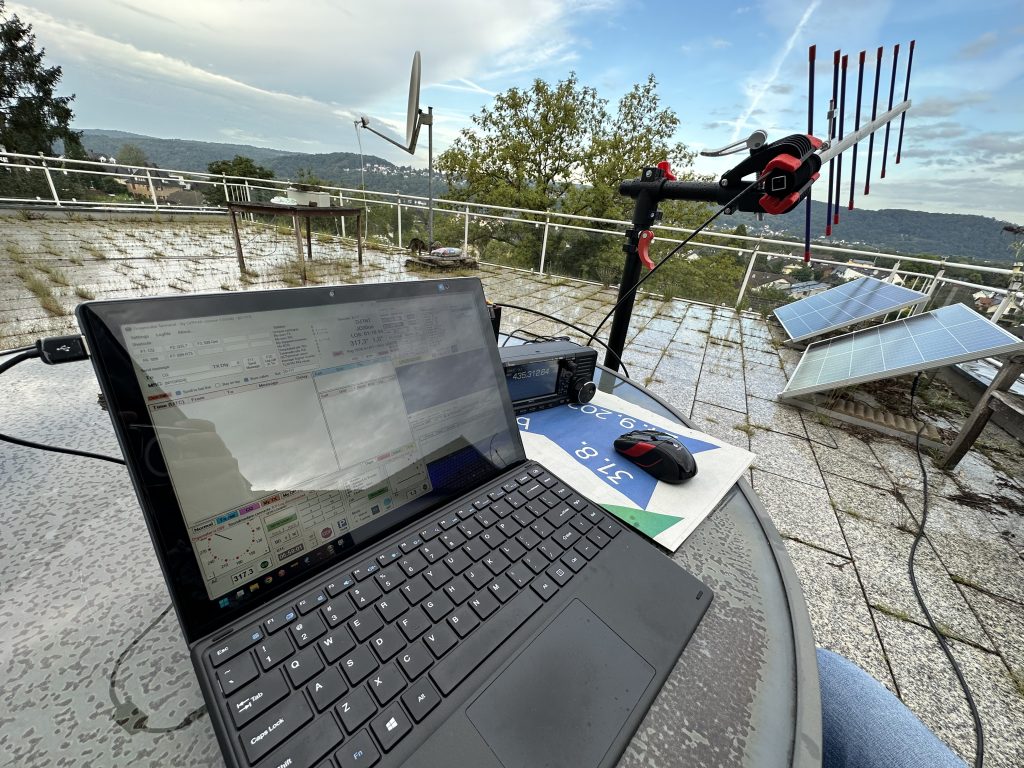
Hardwareaufbau. Im Vordergrund PC, dahinter IC705 und Alaskan Arrow
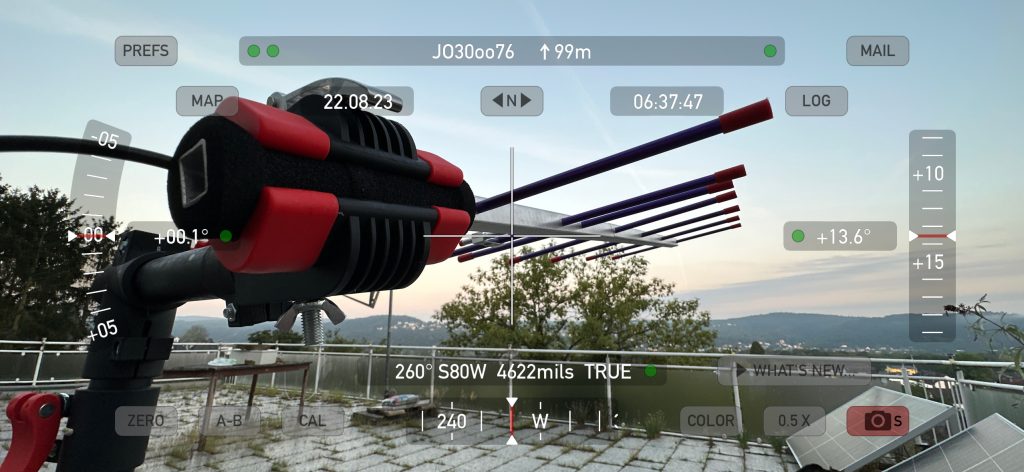
Aug. 01
Hallo an alle Interessierten Funker,
es ist wieder soweit, am kommenden Samstag 5.8.23 wird ab 19.00 Uhr
Rodenbach aktiviert. Es wird wieder gegrillt und geklönt.
Freu mich auf euch alle .
Sven (DM4SH)


Juli 17
Hallo an die gesellige Runde,
Ich darf Euch freudig mitteilen, daß wir seit Samstag im Besitz des Clubcalls DL3O sind.


Mit freundlichen Grüßen
Sven (DM4SH)
Juli 17
JO30.de bietet – versuchsweise – einen Service für Entwickler an.
Jeder der schon mal versucht hat einen DXCluster in seiner Software abzubilden, wird auf das Problem mit dem Streaming der Clusterdaten gestossen sein. Um einen Cluster einigermassen akkurat abzubilden, muss man sich per telnet/TCP auf den Cluster verbinden und dann werden einem die Informationen hereingespült.
Das ist auch vollkommen sinnvoll, das so zu machen, man möchte die Infos ja in Echtzeit haben.
Möchte man jedoch gezielt suchen wer bspw. auf welcher QRG gespottet wurde, wird es schon schwieriger. Für den Endanwender gibt es wirklich gute Seiten (bspw. dxheat.com oder dxfuncluster.com) wo man sich das ganze Anzeigen lassen kann.
Viele Logbücher arbeiten mit dem Cluster, in dem sie die Echtzeitinfos – ab Start des Logbuchprogramms – sammeln und durchsuchbar machen. Die Infos sind dann aber erst ab dem Zeitpunkt verfügbar, wo das Programm sich zum ersten mal mit dem Cluster verbunden hat.
Hier setzt unserer kleiner Webservice an. Er sammelt die letzten 1000 Spots ein und macht diese per REST/JSON verfügbar. Sobald der 1001e Spot kommt, wird der älteste aus dem Cache geworfen. Rollierendes Prinzip also.
Das ganze kann man auch selber Betreiben. Der Quellcode in node.js ist opensource und bei github verfügbar
Es gibt zwei Methoden den Cluster per REST abzufragen:
Basis-URL unseres Dienstes ist: dxc.jo30.de/dxcache – gefolgt von den beiden o.g. Methoden.
Beispieloutput von „/spots“:
[
{
spotter: "AB1CDE",
spotted: "ZY9XWV",
frequency: 7113,
message: "tnx qso",
when: "2023-07-16T09:19:11.457Z",
add: {
mode: "SSB",
band: 40
}
},
{
spotter: "MM0MMM",
spotted: "DL0L",
frequency: 14193,
message: "VY 73",
when: "2023-07-16T09:19:18.710Z",
add: {
mode: "SSB",
band: 20
}
},
]
Beispielout von „/spot/50260“:
{
spotter: "MM0MMM",
spotted: "DL0L",
frequency: 14193,
message: "VY 73",
when: "2023-07-16T09:19:18.710Z",
add: {
mode: "SSB",
band: 20
}
}
English:
JO30 provides – for testing – a small Webservice for Developers.
Everyone who tried using a DXCluster within his Software-project stumbled up on the following Problem:
To work with a cluster, you have to subscribe to a telnet/TCP-Stream where latest spots are streamed.
That’s okay, because you want to have the Information in Realtime. So streaming is fine here.
But if you want to search who was spotted on a frequency last, you have to cache all of these informations given by storing them while streaming. For the normal User there are plenty of Websites, where you can easily search (like dxheat.com or dxfuncluster.com).
Many logbooks/tools work with the Cluster, in the following way: They store the streamcontens for their use locally and work with them. But the oldest spot will always be the one, when Software is started.
This is exactly our usecase. Provide a REST-API which is based on the RT-Stream. The last 1000 spots are cached here. it’s kind of a „rolling cache“. The amount of spots to be saved in memory is adjustable.
The Code for the service is opensource, so you’re able to run your own cache. Available at github
Currently there are two methods implemented:
Base-URL of our service is: dxc.jo30.de/dxcache – followed by one of the methods
Exampleoutput of „/spots“:
[ {
spotter: "AB1CDE",
spotted: "ZY9XWV",
frequency: 7113,
message: "tnx qso",
when: "2023-07-16T09:19:11.457Z",
add: {
mode: "SSB",
band: 40
}
},
{
spotter: "MM0MMM",
spotted: "DL0L",
frequency: 14193,
message: "VY 73",
when: "2023-07-16T09:19:18.710Z",
add: {
mode: "SSB",
band: 20
}
},
]
Exampleoutput of „/spot/14193“:
{
spotter: "MM0MMM",
spotted: "DL0L",
frequency: 14193,
message: "VY 73",
when: "2023-07-16T09:19:18.710Z",
add: {
mode: "SSB",
band: 20
}
}
Juli 11
Wir treffen uns ab jetzt immer jeden ersten Samstag im Monat in Rodenbach/NR.
Eine Ortseinweisung ist bei Anfahrt auf Rodenbach auf der 144.675Mhz möglich, um das genaue QTH zu erfragen.
Abweichungen werden hier bekanntgegeben.